Do you have a question about the Fuji Electric PXV3 SERIES and is the answer not in the manual?
Safety guidelines for electrical wiring connections and precautions.
Safety guidelines for connecting and using the electrical power supply.
General safety precautions for unit operation, modification, and maintenance.
Safety guidelines for installing the unit in various environments.
Safety precautions related to the maintenance of the unit.
Defines the input signal types and their corresponding codes.
Defines the control output types and their corresponding codes.
Defines the secondary control output types and their codes.
Defines the alarm option types and their corresponding codes.
Defines the power supply options and their corresponding codes.
Lists available input signals and their measurement ranges.
Details control functions for single output configurations.
Details control functions for dual output configurations.
Specifies available output types and their capabilities.
Describes setting methods and display indications.
Explains the method used for self-diagnosis.
Explains how parameter values are retained during power loss.
Provides the physical dimensions of the controller unit.
Specifies the required panel cutout dimensions for installation.
Ensures waterproofness between the unit and panel during installation.
Step-by-step instructions for installing the controller unit.
Details the connections for various terminals on the unit.
Specifies the recommended gauge and type of wiring material.
How to view and modify parameters on the front panel.
Step-by-step guide to setting the desired setpoint value.
Operation procedures for the Primary (Setpoint) menu.
Operation procedures for the Secondary (System) menu.
Operation procedures for the Factory Preset menu.
Lists the available front panel sizes for PXW models.
Defines input signal types and their corresponding codes.
Defines control output types and their corresponding codes.
Defines secondary control output types and their codes.
Defines alarm option types and their corresponding codes.
Defines power supply options and their corresponding codes.
Lists available input signals and their measurement ranges.
Details control functions for single output configurations.
Details control functions for dual output configurations.
Details the available types of control outputs for single output.
Details available control outputs for dual output.
Describes the method used for setting parameters.
Explains how Process Value and Setpoint are displayed.
Describes the status indicators on the controller.
Specifies the accuracy of parameter settings.
Specifies the accuracy of the displayed indications.
Configuration details for alarm outputs.
Configuration details for the heater break alarm output.
Explains memory protection features against power disruption.
Describes the method for performing a self-check.
Function to hide or show specific parameters.
Describes the ramp and soak programming functionality.
Details the methods for mounting the controller.
Describes the types of external terminals used.
Information about the controller's enclosure material and color.
Provides physical dimensions for various PXW models.
Lists the approximate weight for different PXW models.
Details protective features like NEMA 4X and IEC IP66.
Specifies cutout size for multiple unit installations.
Ensures waterproofness during installation according to NEMA 4X standards.
Step-by-step instructions for installing the PXW unit.
Precautions and guidelines for connecting power.
Instructions for connecting different types of input signals.
Specific wiring guidelines for thermocouple inputs.
Specific wiring guidelines for RTD Pt100 inputs.
Specific wiring guidelines for current and voltage inputs.
Guidelines for wiring controller outputs to loads.
Illustrates a typical wiring diagram for the PXV3 controller.
Illustrates a typical wiring diagram for the PXW controller.
Instructions for accessing and modifying controller parameters.
Detailed steps for setting the desired setpoint value.
Guide to operating the Primary (Setpoint) menu.
Guide to operating the Secondary (System) menu.
Guide to operating the Factory Preset menu.
Setpoint menu parameters relevant to autotuning setup.
Sets the threshold for the high alarm activation.
Sets the threshold for the low alarm activation.
Sets the setpoint for the Heater Break Alarm.
Selects the type of autotuning to be performed.
Sets the Proportional Band parameter for control.
Sets the Integral Time parameter for offset correction.
Sets the Derivative Time parameter for overshoot reduction.
Sets the Cycle Time parameter for output #1.
Enables or disables parameter changes.
Hysteresis parameter to prevent relay chatter.
Cycle Time parameter for output #2.
Coefficient for cooling side proportional band.
Parameter for deadband or overlap in heat/cool control.
Balance parameter for proportional band positioning.
Anti-reset wind-up parameter for integration.
Parameter for selecting the input sensor type.
Sets the lower limit for input range scaling.
Sets the upper limit for input range scaling.
Sets the display resolution for values.
Sets the action type for Alarm Type 1.
Sets the action type for Alarm Type 2.
Adjusts the indicated process variable.
Adjusts the measured setpoint variable.
Selects between Celsius and Fahrenheit scales.
Displays the current status of Ramp/Soak operation.
Sets the target value for each ramp segment.
Sets the duration for each ramp segment.
Sets the duration for each soak segment.
Selects from 16 different ramp/soak modes.
Sets control action direction and sensor burn-out protection.
Codes representing various output types and control actions.
Defines the different output types available for the controller.
Specifies the direction of the control action.
Defines the output behavior during sensor burn-out.
Adjusts the input filter to reduce noise and erratic control.
Sets hysteresis for alarm setpoints to prevent chatter.
Function for calibrating input signals.
Function for calibrating input signals.
Allows masking of unused parameters from display.
Identifies error codes displayed by the unit for troubleshooting.
Explains the underlying cause for each displayed error code.
Describes the controller's output behavior during error conditions.
Explains the autotuning process for optimizing control parameters.
Guide for manually adjusting PID control parameters.
Explains how to set and tune the Proportional Band parameter.
Explains the Integral Time parameter for offset correction.
Explains the Derivative Time parameter for overshoot reduction.
Step-by-step guide for tuning the Proportional Band.
Step-by-step guide for tuning the Integral Time.
Step-by-step guide for tuning the Derivative Time.
Describes the Heater Break detection option and its function.
Explains the Heat/Cool control option for dual outputs.
Cycle Time parameter for Output 2 in heat/cool control.
Sets the Proportional Band Coefficient for Cooling.
Parameters specific to the heating side of heat/cool control.
Parameters specific to the cooling side of heat/cool control.
Sets deadband or overlap for heat/cool control.
Lists parameters, ranges, and descriptions for the Primary menu.
Lists parameters, ranges, and descriptions for the Factory Preset menu.
| Brand | Fuji Electric |
|---|---|
| Model | PXV3 SERIES |
| Category | Controller |
| Language | English |
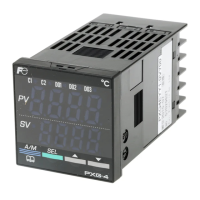

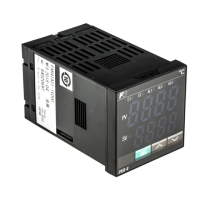

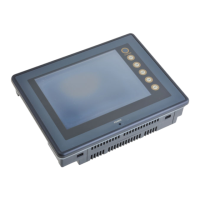




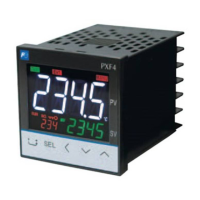
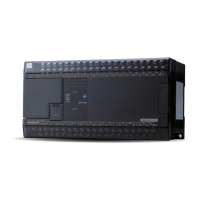

